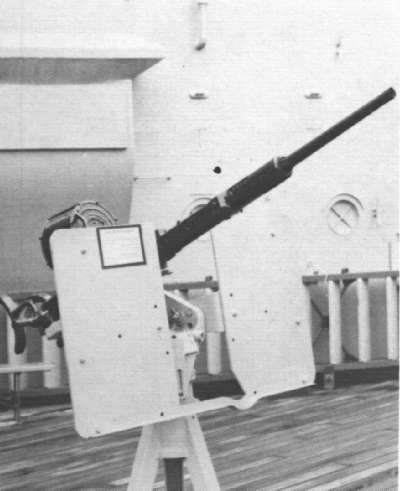

Indeed
some reason for the adoption of the 20mm may have been the British who
had lost their contact with Switzerland in 1940 and who, despite having
a production license, did not begin production at home and wanted a U.S.
production line, which request was denied because the Oerlikon was not
standard US armed forces issue. Before long, and on grounds of seeing it
as the best available weapon, BuOrd approved the production on 9th November
1940.
Reception in the fleet was
enthusiastic, the gun being a more than welcome replacement of the .50
caliber, but production could not sufficently quickly replace all of the
latter, so that in the early months, most of the air-defenses aboard ships
had to rely on the .50-caliber.
Indeed
the career of the 20mm was quite short. It had extraordinary successes
in 1942, 1943 and up to mid-1944, but with the advent of the kamikaze,
the 20mm was not adequate anymore. It was, however, retained because of
the psychological effect that the ability to fire at the attacker had for
the seamen, and twin and quadruple mounts had been tested and installed
aboard several ships.
The 20mm was
fed from a drum atop the gun, as seen in the picture above.
|
|
Year of Construction:
1940
Bore: 20mm Weight of gun: 64 - 68 kg / 141 - 150lbs Weight of barrel: 21.8 kg / 48 lbs Length of gun: 2210mm / 87 ins Length of bore: 1400mm / 55.118 ins Wt. of projectile: 0.12kg / 0.27lbs Max. Range: 4390m / 4800 yds Ceiling: 3050m / 10.000 ft at 90° Max. Elevation: 90° Rate of Fire: 265 rounds/min |